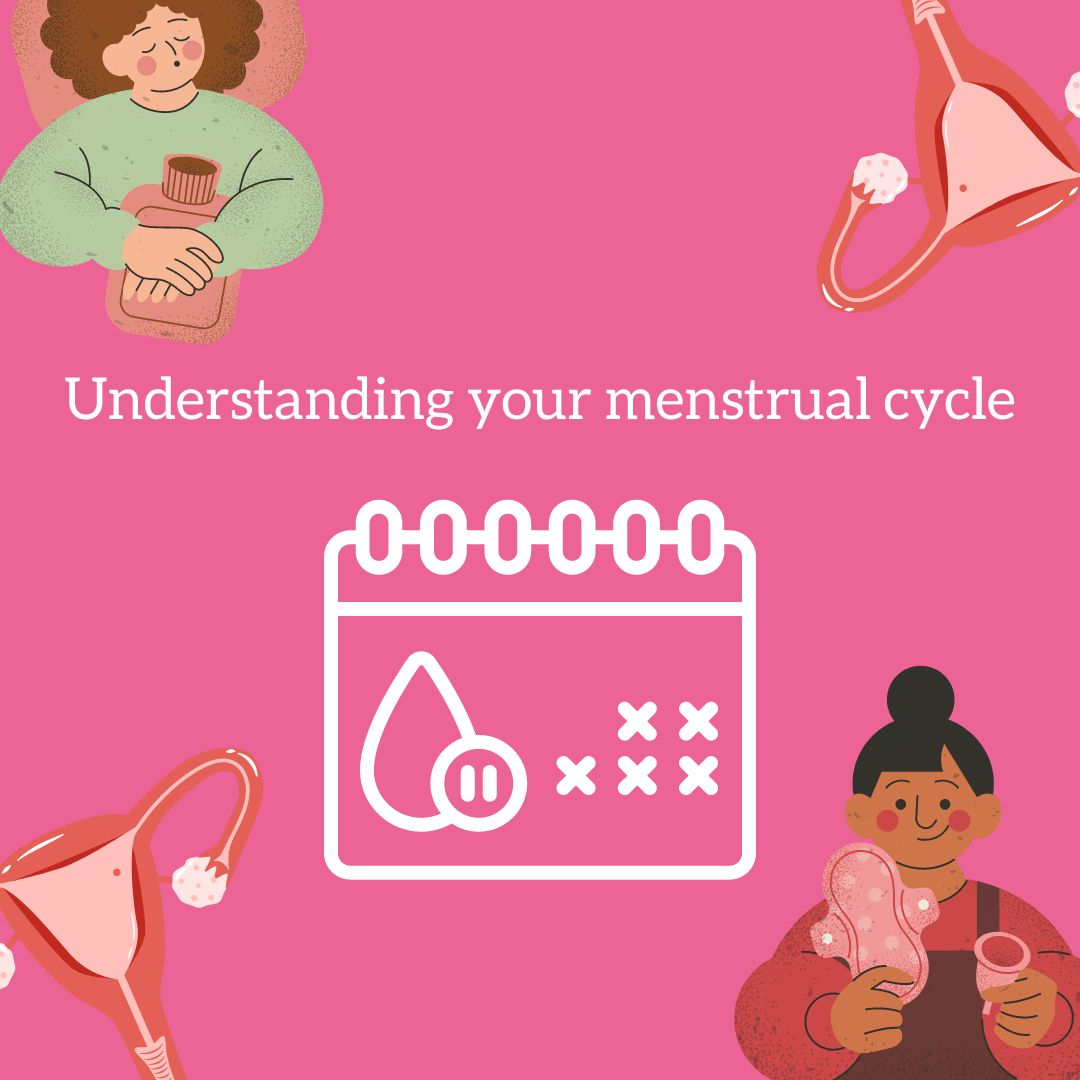Understanding Your Menstrual Cycle

Your menstrual cycle is essentially your body's way of preparing itself for the possibility of pregnancy each month. It’s a natural process that varies from person to person in both length and intensity, but the majority of people cannot name all 4 stages of the cycle. And knowledge is power, so learn more here...
The Basics of Your Cycle
Each starts with the development and release of an egg from your ovaries. As the egg prepares to meet potential sperm, the lining of your uterus thickens, ready to support a pregnancy. If pregnancy doesn’t happen, that lovely lining is shed during your period, and then the cycle begins anew.
Your cycle is divided into four main phases:
- Menstrual Phase
- Follicular Phase
- Ovulation Phase
- Luteal Phase
Stage 1: Menstrual Phase (AKA The Beginning)
The menstrual phase is where it all begins — it’s the start of your period. This phase kicks off when the egg from the previous cycle wasn’t fertilised. Since pregnancy didn’t occur, your body sees a drop in the hormones estrogen and progesterone.
With no need for the thickened uterine lining anymore, it sheds away through your vagina. What you see during your period is a mix of blood, mucus, and tissue from your uterus.
During this phase, you might feel a few familiar 'PMS' symptoms, such as:
- Cramps (we recommend chamomile, rose and raspberry leaf tea to help naturally relieve these)
- Tender breasts
- Bloating (this is why we add dandelion root to our Over The Moon period support tea)
- Mood swings
- Irritability
- Headaches
- Fatigue
- Low back pain
Don’t worry, it’s your body’s way of letting you know it’s taking care of business. But make sure you're armed with a delicious cup of herbal tea to help support you through this!
Stage 2: Follicular Phase (AKA Preparing for Ovulation)
The follicular phase starts on the first day of your period and ends when you ovulate. It’s essentially a short overlap between the menstrual phase and ovulation.
It begins when your hypothalamus nudges your pituitary gland to release follicle-stimulating hormone (FSH). This hormone tells your ovaries to get busy producing small sacs called follicles, each containing an immature egg. Usually, only the healthiest egg will fully mature, while the rest will be reabsorbed by your body.
As the follicle matures, it triggers a surge in estrogen, which thickens your uterine lining. This prepares a lush, nutrient-rich environment where an embryo can thrive.
On average, the follicular phase lasts about 16 days, but it can vary from 11 to 27 days depending on your cycle. We are all unique, and there is no 'wrong' length.
Did you know? Sperm can hang around for up to five days, so you could still get pregnant from having sex before ovulation - it's worth taking care if you don't want this outcome.
Stage 3: Ovulation Phase (AKA The Big Moment)
When estrogen levels rise during the follicular phase, your pituitary gland responds by releasing luteinizing hormone (LH), which sets off ovulation.
Ovulation is the main event where your ovary releases a mature egg. This egg then makes its way down the fallopian tube, hoping to meet some friendly sperm.
During this phase, you’re most likely to get pregnant. You might notice signs like:
- A slight rise in basal body temperature
- Thicker, egg-white-like discharge
Ovulation typically happens around day 14 of a 28-day cycle, right in the middle. It only lasts about 24 hours, so if the egg isn’t fertilized, it’ll dissolve and be reabsorbed by your body.
Stage 4: Luteal Phase (AKA Wrapping Things Up)
After the egg is released, the follicle transforms into what’s called the corpus luteum. This structure pumps out hormones, mainly progesterone and some estrogen, to keep your uterine lining thick and ready for a fertilised egg.
If pregnancy occurs, your body will produce human chorionic gonadotropin (hCG) — the hormone detected by pregnancy tests — to maintain the corpus luteum and keep your uterine lining intact.
If pregnancy doesn’t happen, the corpus luteum will shrink and be absorbed by your body, leading to a drop in estrogen and progesterone. This decrease triggers your period, starting the cycle over again.
During this phase, you might experience PMS symptoms like:
- Bloating
- Breast tenderness or swelling
- Mood changes
- Headaches
- Weight gain
- Changes in sexual desire
- Food cravings
- Trouble sleeping
The luteal phase usually lasts between 11 to 17 days, with an average of 14 days. But again, we're all different, so it's important simply to understand your own body.
Common Menstrual Issues
Every menstrual cycle is unique. Some people have a regular cycle that arrives like clockwork, while others might experience more irregularities. Your cycle might also change throughout your life, particularly as you approach menopause in your 30s and 40s.
It’s helpful to track your periods, noting when they start and end, any changes in the amount or duration of bleeding, and whether you experience spotting between periods.
Certain factors can influence your menstrual cycle, such as:
- Contraception: The pill may make your periods lighter and shorter, and some pills might stop your periods altogether.
- Pregnancy: Your periods should stop during pregnancy, and a missed period is often one of the first signs.
- Polycystic ovary syndrome (PCOS): This hormonal imbalance can lead to irregular cycles and missed periods.
- Uterine fibroids: Noncancerous growths in the uterus can cause longer, heavier periods.
- Eating disorders: Conditions like anorexia and bulimia can disrupt your menstrual cycle, sometimes stopping periods altogether.
Be on the lookout for signs of potential issues with your cycle, such as:
- Skipped or stopped periods
- Irregular cycles
- Bleeding for more than seven days
- Cycles shorter than 21 days or longer than 35 days
- Heavy bleeding between periods
If you notice any of these, you should contact your healthcare professional.




Comments